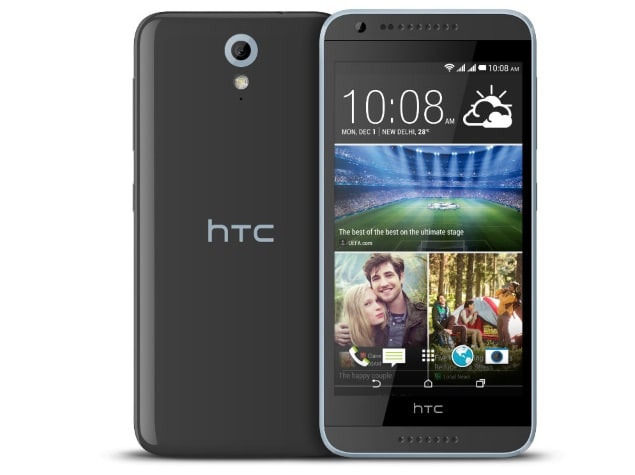Released earlier this month, the HTC Desire 620G Dual SIM is the 3G of the Desire 620 Dual SIM, which supports 4G connectivity and is so far to make its start to Indian market. Both the HTC Desire 620 Dual SIM and HTC Desire 620G Dual SIM started their sales in Taiwan early this month. Both and HTC Desire 620 and and HTC Desire 620G dual-SIM smartphones almost share same specifications except the inbuilt storage expansion limit, network connectivity and processor. This 3G-supporting HTC Desire 620G Dual SIM is packed with a 1.7GHz octa-core MediaTek MT6592 processor with microSD card storage expansion up to 32GB. The 4G-enabled HTC Desire 620 Dual SIM is a 64-bit 1.2GHz quad-core Qualcomm Snapdragon 410 processor, and storage expansion up to 128GB. Specs on HTC Desire 620G Dual SIM:
5-inch 720p display Android 4.4 KitKat OS 1.3GHz octa-core MediaTek MT6592 CPU 1GB RAM 8GB internal memory with microSD card slot (up to 32GB) 2,100 mAh battery
You can Buy HTC Desire 620G Dual SIM Blue and Grey here on Flipkart for 5% off. The Android 4.4.4 (KitKat) platform Desire 620G Dual SIM comes with well-liked HTC BlinkFeed. The phones features a 5’ LCD display with HD i.e., 720×1280 pixels resolution with a pixel density of 294ppi, 1GB of RAM, 8GB of inbuilt storage, HTC Eye Experience, a 2100mAh removable battery 8 megapixel rear camera with LED flash and 5 MP front-facing camera with a BSI sensor. HTC says that the battery on the Desire 620G Dual SIM can give up to 19 hours of talk time and can hold up to 525 hours of standby time. Connectivity features of HTC Desire 620G are Bluetooth 4.0, Wi-Fi 802.11 b/g/n, GPRS/ EDGE and GPS/ A-GPS. The HTC Desire 620G Dual SIM has both dual Micro-SIM slots. Coming to its dimensions it’s of 150.1×72.7×9.6mm, the HTC Desire 620G Dual-SIM weighs 160 grams, the HTC’s trademark design with dual front-facing speakers. The new Desire-series smartphone will be available in 2 colors at present Santorini White and Gunmetal Grey colours. Bonus Article on Android :: Interesting facts about Android OS and it’s history
